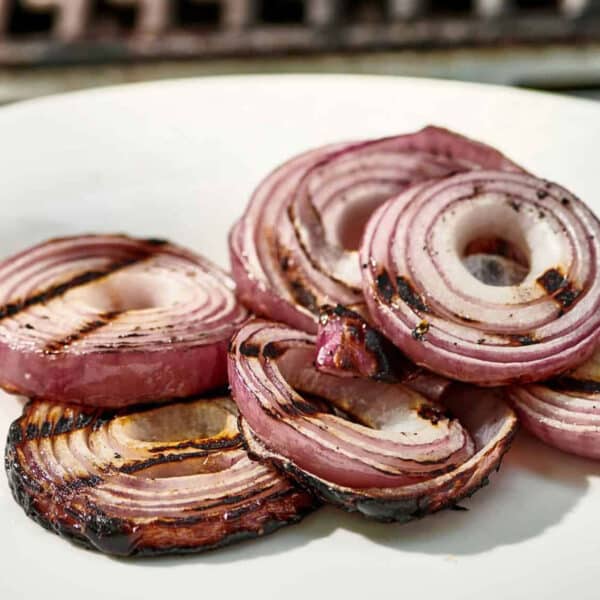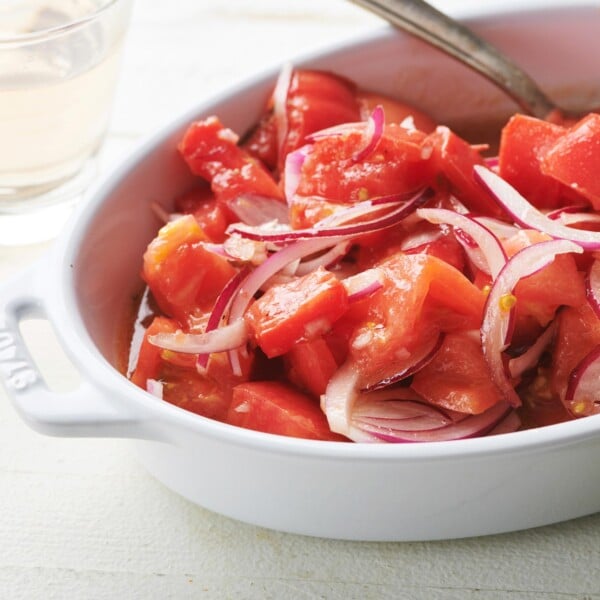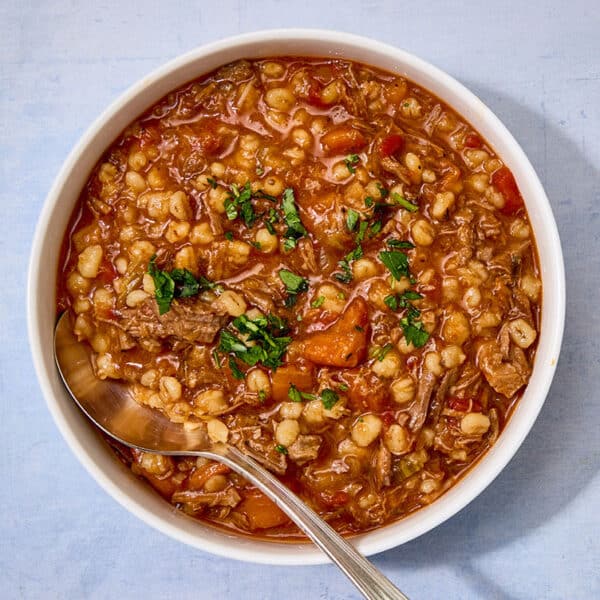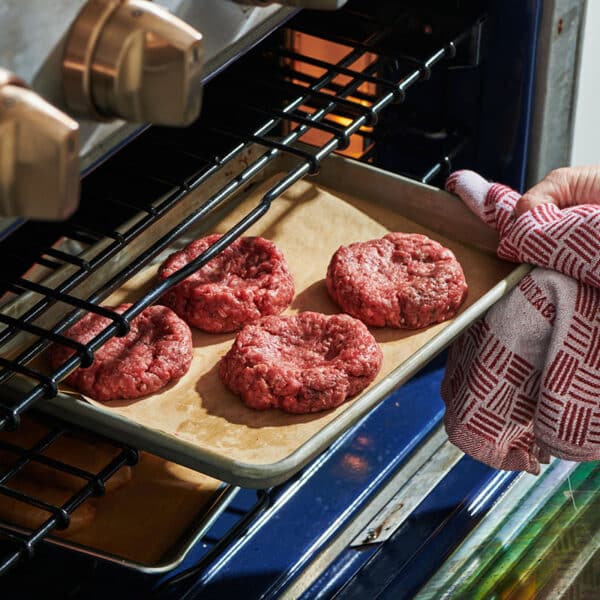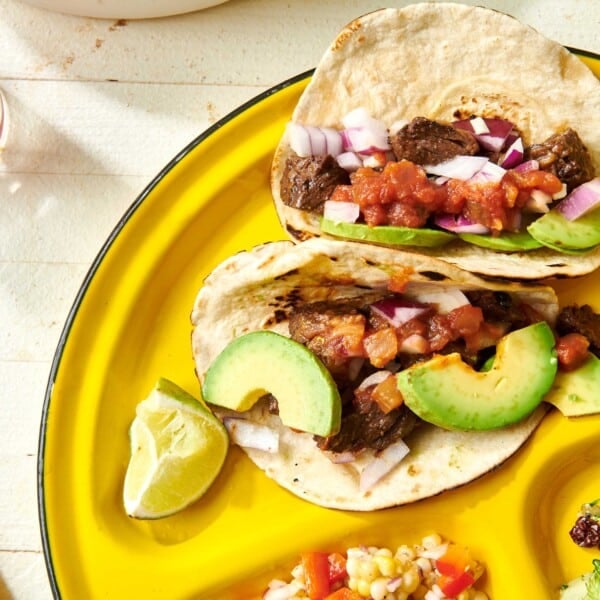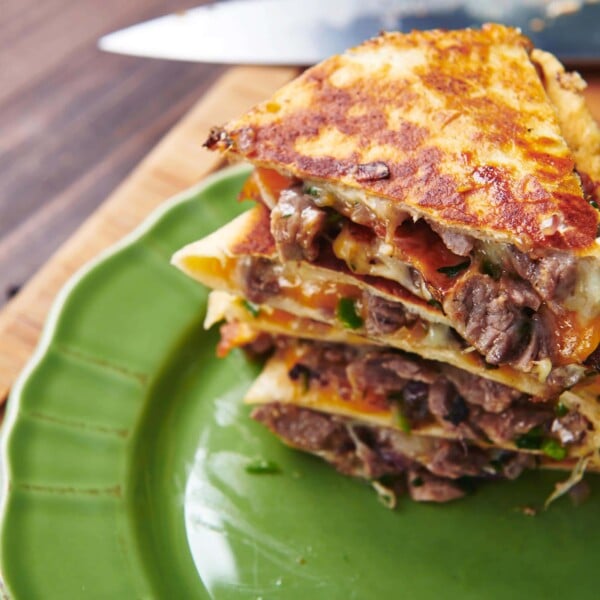How to Grill Ribeye Steaks
on Jun 12, 2023, Updated Jun 17, 2025
This post may contain affiliate links. Please read our disclosure policy.
Richly flavored, tender but with great chew, and smoky from the grill, these steaks deeply satisfy those beef cravings.
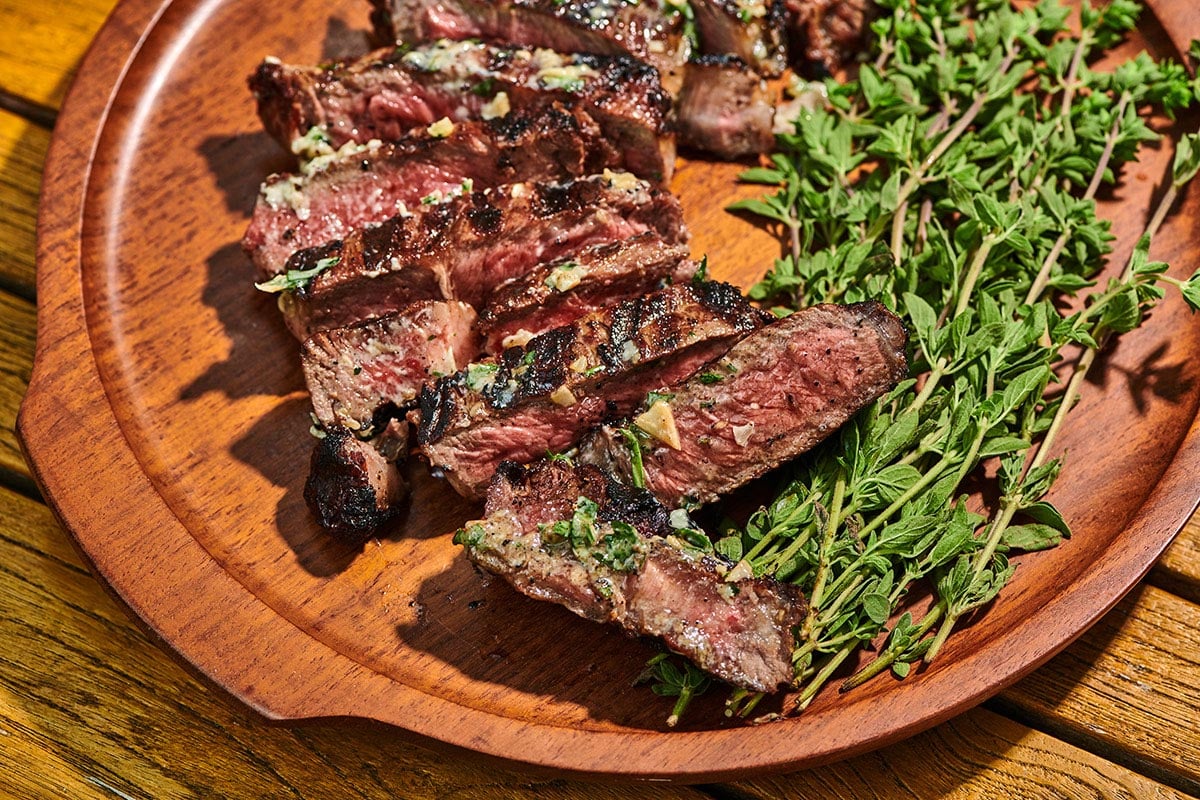
Grilled ribeye steaks are one of the go-to summer steak meals of summer and one of the first things I make to kick off the summer grilling season. Richly flavored, tender and juicy, but with great chew, and smoky from the grill, these steaks deeply satisfy any beef cravings. These steaks would be perfect with Steakhouse Tomato Salad, Grilled Corn, Tomato and Mozzarella Pasta Salad, or Mayonnaise-Free Potato Salad.
Ribeye steaks are known by different names in different parts of the country and the world. You might see them labeled Cowboy Cut, Delmonico, Spencer, beauty steak, market steak, or Scotch filet. In France (or at a butcher or restaurant with a French bent), the steaks might be called côte de boeuf or entrecôte.
By signing up, you agree to our Privacy Policy.
What's In This Post?
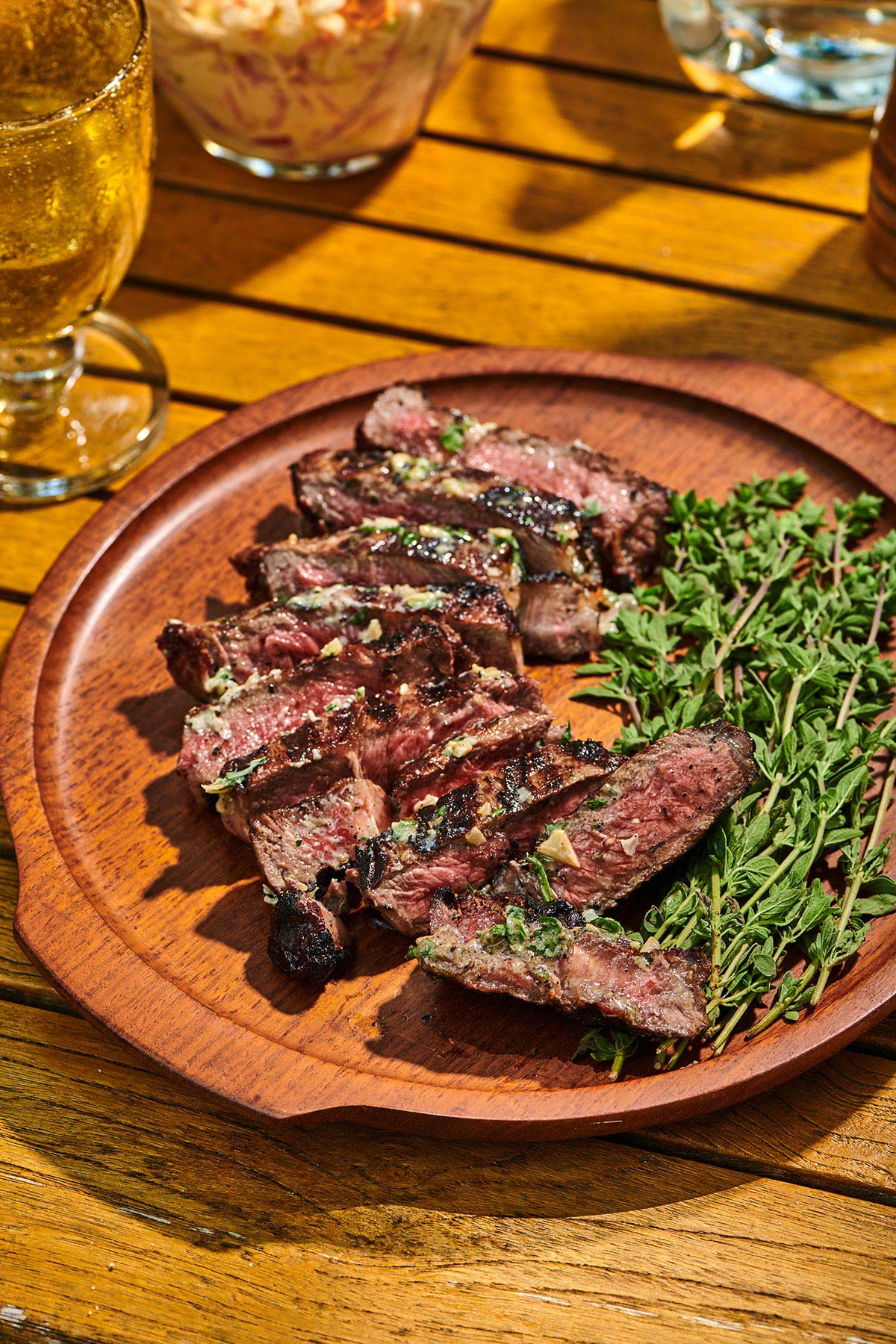
Ribeye steaks come from the beef rib part of the cow, between the chuck and the loin. They are essentially rib steaks with the bone removed. These steaks usually come between 1 and 1 1/2 inches thick; 1 1/2 inches of thickness is ideal, as the outside will be able to sear up while the inside remains pink and juicy. And you’ll be able to get those perfect cross-hatch grill marks on the exterior without overcooking the meat!
Also try Grilled Mexican Ribeye Steaks and Ribeye Steaks with Thyme Garlic Butter.
How to Grill Ribeye Steaks: Richly flavored, tender but with great chew, smoky from the grill, these steaks deeply satisfy those beef cravings.
How to Buy Ribeye Steaks
If possible, you want to buy them freshly cut from a butcher or the butcher counter at a good supermarket with a high turnover. You can get them cut to order at a butcher to your desired thickness.
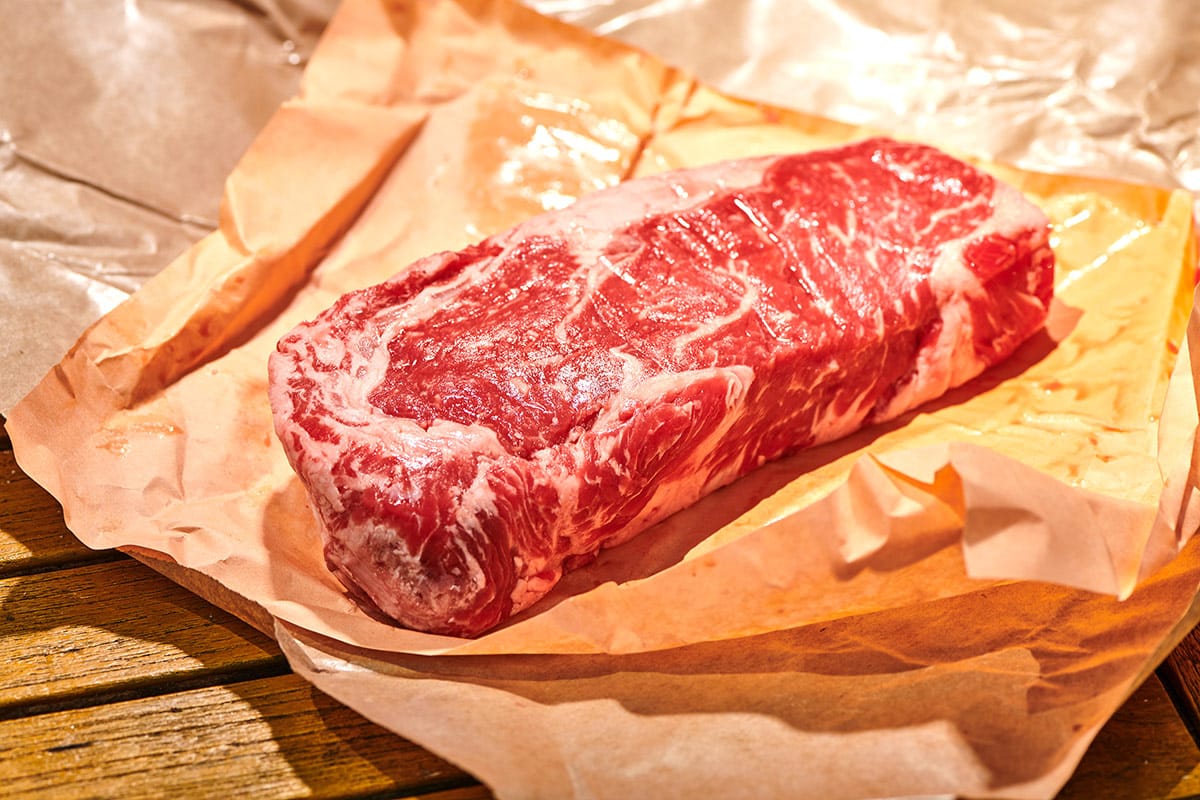
USDA Prime is the top of the range, with only about 2% of the beef in this country earning that label. These are the best ribeye steaks. Prime beef has nice fat marbling throughout, which is what gives the ribeye (and all tender steaks) terrific tenderness and a wonderful, incredible flavor. USDA Choice comes after that, which will be a bit leaner, with less marbling. Below Choice is the Select grade, which will be leaner still. Buy the best grade of beef you can find and justify — there is a difference!
Ribeye steaks should be bright red with no dark spots. Steaks turn browner as they age, indicating they were not cut as recently. Do not buy or cook meat with a sour or off odor.
How Much Ribeye Steak Per Person?
The average person will eat 5 to 6 ounces of steak for a meal. However, if you are grilling up big, beautiful ribeyes for a group of red meat lovers, plan about 8 ounces per person.
Ribeyes can be purchased with or without the bone, so take that into account when evaluating how much meat you’re buying. A ribeye steak often weighs about 2 pounds or so. It’s obviously a lot of meat for one person, so you might think about slicing up your steaks before serving them. You can make the presentation look really nice, and also leave the bone on the serving platter with the sliced steak and let your family or friends negotiate who gets to nibble on that. (In our house, that’s pretty much always Charlie.)
Also, if the weather isn’t cooperating, you may be interested in cooking your ribeyes on the stove.
How Long to Grill Ribeye Steaks Over Direct High Heat
These grill times and internal temperatures take into account the fact that the temperature of the meat will continue to climb by several degrees once the steak is removed from the heat to a cutting board. These are the temperatures at which you should pull the hot steaks from the grill.
First, let me just say that if you don’t have a good meat thermometer and you cook a lot of meat, you should fix that! I like the Thermapen, which is a little pricey, but so very reliable. And there is a less expensive version available (the Thermopop) if that’s more within budget.
But if you don’t have one, you still can monitor the level of doneness using the touch test.
| Steak Thickness | Doneness in Degrees | Grill Time |
|---|---|---|
| 1/2 inch thick | Rare (125 degrees F) | 1-2 minutes per side |
| 1/2 inch thick | Medium-Rare (130 F) | 2-3 minutes per side |
| 1/2 inch thick | Medium (135 F) | 3-4 minutes per side |
| 1 inch thick | Rare (125 F) | 3-4 minutes per side |
| 1 inch thick | Medium-Rare (130 F) | 4-6 minutes per side |
| 1 inch thick | Medium (135 F) | 6-8 minutes per side |
| 1 1/2 inches thick | Rare (125 F) | 5-6 minutes per side |
| 1 1/2 inches thick | Medium-Rare (130 F) | 6-8 minutes per side |
| 1 1/2 inches thick | Medium (135 F) | 8-9 minutes per side |
How to Grill Ribeye Steak
- Make the herb compound butter (if using).
- Preheat the grill to medium-high.
- Place the steaks on the hot grill. Flip the steaks every few minutes to get nice cross-hatch marks until they are cooked to your desired level of doneness.
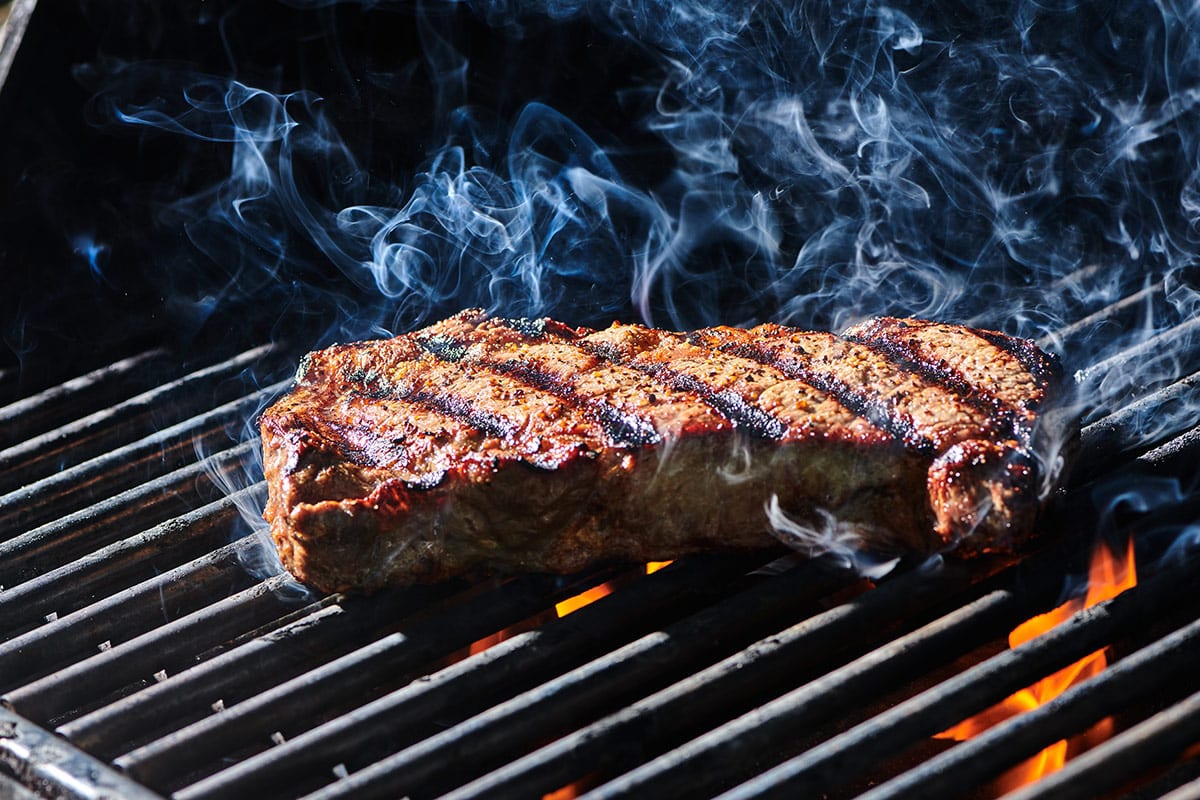
- Prepare the compound butter: Slice the chilled butter into 4 circles.
- Finish the steaks: Place the butter on top of the meat and let it melt. Give the whole thing a nice grind of black pepper. Let sit for at least 5 minutes. Slice the steaks and serve.
How to Slice Ribeye Steaks for Serving
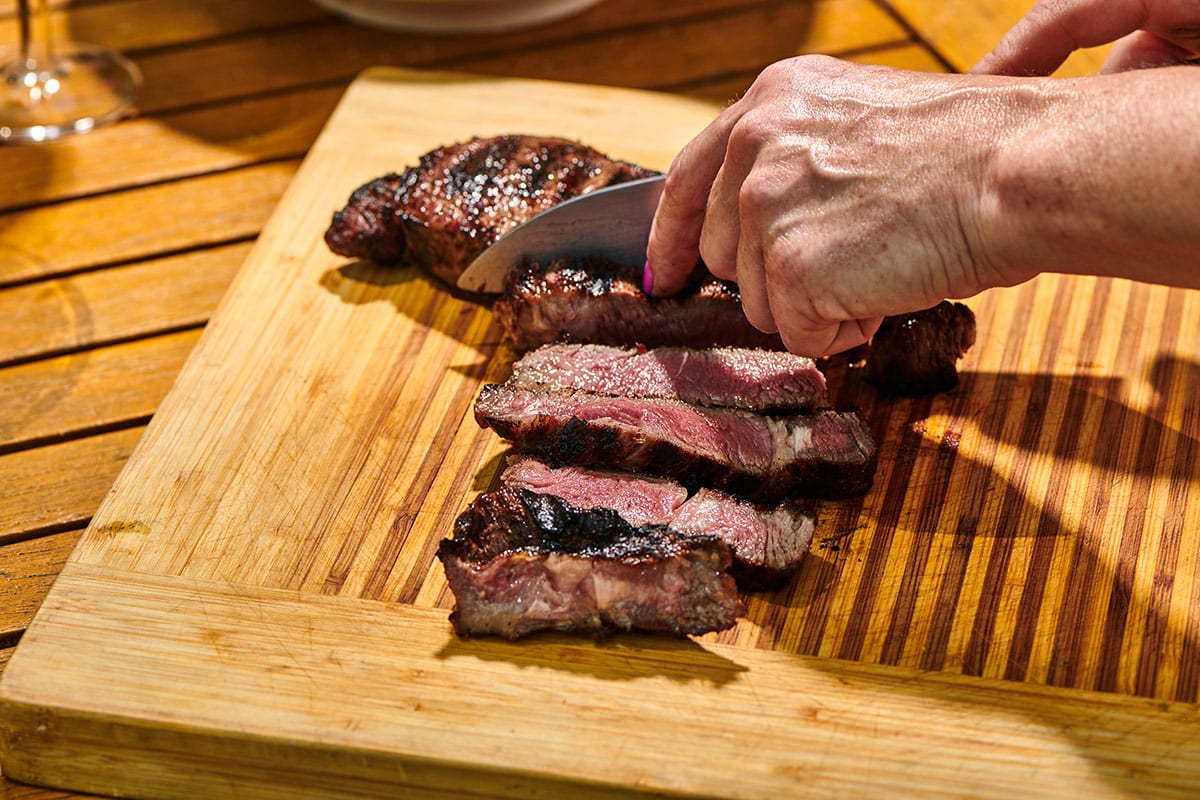
Make sure to let the meat rest after you remove it from the grill. A ribeye steak should sit for 5 to 10 minutes (longer for thicker steaks) before slicing. This will keep the steaks tender and juicy. Use a nice sharp knife to cut the meat. A paring knife might be helpful for cutting the bone from the steak before slicing.
Slice steak across the grain to maintain the most tender texture. The thickness of the slices is up to you; we prefer pieces about 1/2-inch thick, but some people like thicker slices of about 1 inch.
On the edge of a ribeye steak, you’ll see a band of fat and meat that wraps around the center of the steak. Many steak lovers think this is not only the most flavorful part of the steak but actually the most flavorful part of the cow.
What to Serve With Grilled Ribeye Steaks
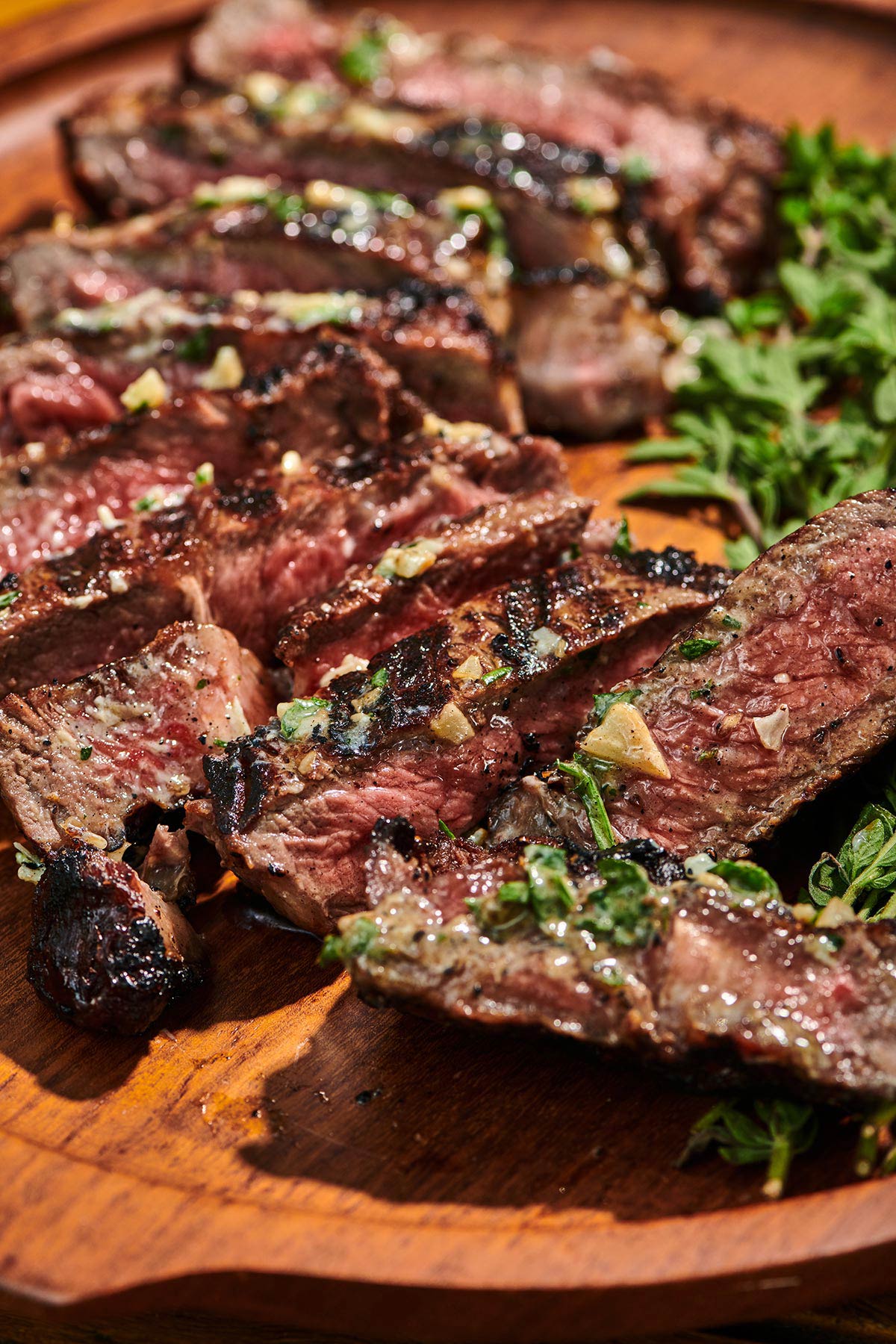
More Grilled Steak Recipes
- Grilled Mexican Ribeye Steaks
- Balsamic-Marinated Skirt Steak
- Chili-Rubbed Flank Steak with Corn, Tomato, and Avocado Salad
- Marinated and Grilled London Broil
- Grilled Ranch Steaks
Pin this now to find it later
Pin It
How to Grill Ribeye Steaks
Equipment
Ingredients
- 2 tablespoons unsalted butter (at room temperature)
- 1 teaspoon fresh lemon juice
- 1 tablespoon minced flat-leaf parsley
- ½ teaspoon minced fresh thyme
- Kosher salt and freshly ground black pepper (to taste)
- 1 (1 1/2-inch thick) ribeye steaks (about 16 to 20 ounces)
- 2 teaspoons olive oil
Instructions
- In a small bowl, combine the butter, lemon juice, parsley, thyme, salt, and pepper, and use a fork to mash the mixture until it is well combined. Turn the mixture onto a piece of plastic wrap and use the plastic to shape the butter into a log about 1 inch thick, and then roll up the log and seal it. Refrigerate until firm.
- Preheat the grill to medium-high. Pat the steaks dry with paper towels. Rub the steak with the olive oil and salt the steak on both sides. Place the steak on the grill and let sit, without moving for 4 minutes. Rotate the steak a quarter turn and grill for another 3 or so minutes to form the cross-hatch marks. Flip the steaks, and repeat: cook the steak for 4 minutes without moving, then rotate the steak a quarter turn and let it grill for another 3 or so minutes, until you get those nice cross-hatched marks. Remove the steaks from the grill when the internal temperature is at 120 F for rare, 125 F for medium-rare, and 130 F for medium. The temperature will continue to climb as the meat rests before you slice it.
- While the steak is cooking, slice the chilled compound butter into 4 circles. As soon as the steak hits the cutting board, place the butter on top of the meat. Let it melt as the steak sits for 5 minutes. Give the top of the steak a nice grind of black pepper if desired. Slice the steaks, season with a bit more salt and pepper, and serve.

